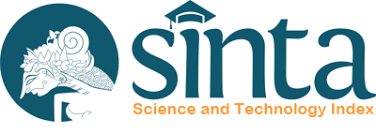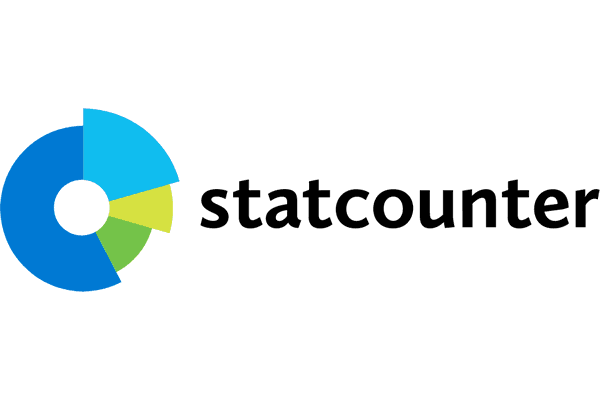Rekognisi Tulisan Kaligrafi Dengan Menggunakan Metode Convolutional Neural Network Arsitektur MobileNetv2
Abstract
Keywords
Full Text:
PDFReferences
R. Al-Hmouz, “Deep learning autoencoder approach: Automatic recognition of artistic Arabic calligraphy types”.
O. V. Putra, A. Musthafa, M. Nur, and M. Rido, “Classification of Calligraphy Writing Types Using Convolutional Neural Network Method (CNN),” Procedia Eng. Life Sci., vol. 2, Nov. 2021, doi: 10.21070/pels.v2i0.1136.
M. Aldayel and K. Saud University, “Khatti: An Interactive Mobile Application for Training of Arabic Calligraphy,” presented at the Intelligent Human Systems Integration (IHSI 2024) Integrating People and Intelligent Systems, 2024. doi: 10.54941/ahfe1004536.
S. AlMuhaideb et al., “Dhad—A Children’s Handwritten Arabic Characters Dataset for Automated Recognition,” Appl. Sci., vol. 14, no. 6, p. 2332, Mar. 2024, doi: 10.3390/app14062332.
M. Khayyat and L. Elrefaei, “A Deep Learning Based Prediction of Arabic Manuscripts Handwriting Style,” Int. Arab J. Inf. Technol., vol. 17, no. 5, pp. 702–712, Sep. 2020, doi: 10.34028/iajit/17/5/3.
C. Schröer, F. Kruse, and J. M. Gómez, “A Systematic Literature Review on Applying CRISP-DM Process Model,” Procedia Comput. Sci., vol. 181, pp. 526–534, 2021, doi: 10.1016/j.procs.2021.01.199.
A. Ismail, Z. Kamel, and R. Mahmoud, “HICMA: The Handwriting Identification for Calligraphy and Manuscripts in Arabic Dataset,” in Proceedings of ArabicNLP 2023, Singapore (Hybrid): Association for Computational Linguistics, 2023, pp. 24–32. doi: 10.18653/v1/2023.arabicnlp-1.3.
F. Abdusyukur, “PENERAPAN ALGORITMA SUPPORT VECTOR MACHINE (SVM) UNTUK KLASIFIKASI PENCEMARAN NAMA BAIK DI MEDIA SOSIAL TWITTER,” Komputa J. Ilm. Komput. Dan Inform., vol. 12, no. 1, pp. 73–82, May 2023, doi: 10.34010/komputa.v12i1.9418.
S. Ramdani and A. Rahmatulloh, “Implementasi Mobilenet untuk Klasifikasi Gambar dan Deteksi Emosi Menggunakan KERAS,” J. Sist. Dan Teknol. Inf. JustIN, vol. 12, no. 2, p. 259, Apr. 2024, doi: 10.26418/justin.v12i2.73389.
[S. F. D. Wardhana and A. Nugroho, “Perbandingan Arsitektur MobileNetV2 dan MobileNetV3 Dalam Klasifikasi Jenis Jeruk,” J. Ilmu Komput. Dan Bisnis, vol. 16, no. 1, pp. 25–34, May 2025, doi: 10.47927/jikb.v16i1.916.
M. N. Baihaqi, A. Sugiharto, and H. Tantyoko, “Classification of Real and Fake Images Using Error Level Analysis Technique and MobileNetV2 Architecture,” J. Masy. Inform., vol. 16, no. 1, pp. 54–68, May 2025, doi: 10.14710/jmasif.16.1.73283.
J. R. Hidaya, “Implementasi Klasifikasi Citra Berbasis Tensorflow Untuk Mendeteksi Penyakit Tanaman Pada Aplikasi Agroscan,” vol. 15, no. 1.
S. Muhartini, A. Sunyoto, and A. H. Muhammad, “Implementasi Metode Deep Learning CNN Dalam Klasifikasi Tajong (Sarung) Samarinda,” J. SENOPATI Sustain. Ergon. Optim. Appl. Ind. Eng., vol. 6, no. 1, pp. 28–41, Oct. 2024, doi: 10.31284/j.senopati.2024.v6i1.6573.
M. Akay et al., “Deep Learning Classification of Systemic Sclerosis Skin Using the MobileNetV2 Model,” IEEE Open J. Eng. Med. Biol., vol. 2, pp. 104–110, 2021, doi: 10.1109/OJEMB.2021.3066097.
A. R. Dani and I. Handayani, “Klasifikasi Motif Batik Yogyakarta Menggunakan Metode GLCM dan CNN,” J. Teknol. Terpadu, vol. 10, no. 2, pp. 142–156, Dec. 2024, doi: 10.54914/jtt.v10i2.1451.
Y. Y. Pane and J. J. Sihombing, “Klasifikasi Jenis Burung menggunakan Metode Transfer Learning,” J. Teknol. Terpadu, vol. 9, no. 2, pp. 89–94, Dec. 2023, doi: 10.54914/jtt.v9i2.744.
M. G. Somoal and A. R. Dzikrillah, “Komparasi MobileNETV2 dengan Kustomisasi Transfer Learning dan Hyperparameter untuk Identifikasi Tumor Otak,” J. Teknol. Inf. Dan Ilmu Komput., vol. 12, no. 1, pp. 229–240, Feb. 2025, doi: 10.25126/jtiik.20251219582.
I. Badruddin, T. R. Nugrahanto, O. D. Pangesti, and T. Agustin, “PENDEKATAN PENGURANGAN OVERFITTING PADA MOBILENET UNTUK KLASIFIKASI CITRA SAMPAH,” 2024.
DOI: https://doi.org/10.32487/jtt.v13i2.2616
Refbacks
- There are currently no refbacks.
JTT (Jurnal Teknologi Terpadu) has been indexed by:
|
|
|
|
|
|
|
|
|













